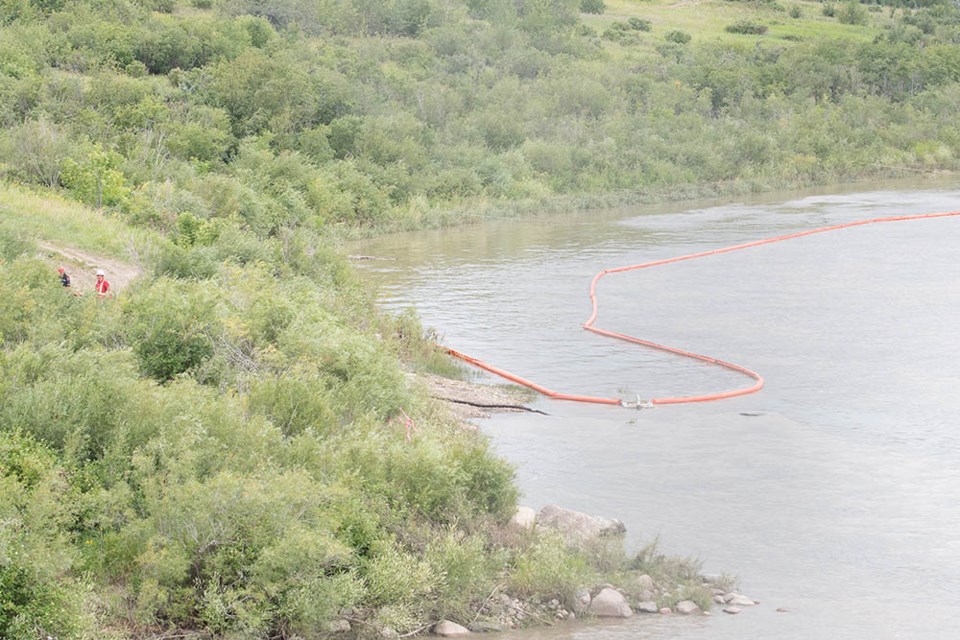The response to the July 20-21 Husky oil spill on the North Saskatchewan River has had some encouraging numbers of late.
From the Aug. 25 media teleconference, we found that 73 per cent of the spilled oil has been recovered. That’s an astonishingly high number when one realizes the spill spread down over more than 400 kilometres of the river. In the highest priority area, “Division 1,” the first 20 kilometres of the affected area, 84 per cent had been cleaned.
Approximately 800 people were working on the cleanup in various capacities.
The amount of oil and diluent released was also firmed up. Instead of saying 200 to 250 cubic metres, government officials are now using the number 225 cubic metres.
Unfortunately, another number was also updated. So far 93 wildlife and 51 aquatic animals have perished as a result of the spill.
The water sample testing has been coming back almost all clear, but there have been a few exceedences. It’s troubling the one exceedance reported was picked up near the inlet for North Battleford’s surface water treatment plant. They’ve also found detectable amounts of some hydrocarbons in some sediment samples. Thus, it might take a little more time before the all clear can be given to start drawing water from the river again.
It’s quite remarkable that 73 per cent has been recovered. If that number is indeed true, it’s probably close to the maximum they are going to be able to recover.
When the spill occurred on July 20-21, the water flow was quite high, around 710 cubic metres of water per second. The river in that region normally runs around 220 cubic metres per second. Due to rain events in Alberta, the river was forecast to flow up to 1,200 cubic metres per day and rise a further two metres for the last weekend in August. The rise meant a lot of recovery efforts had to be suspended and equipment pulled from the river until things settled down.
One of the techniques used for cleanup is using hoses to wash oil off affected areas, and then recovering the oil. If the shoreline was inundated with two metres of very fast moving water, this will likely have a lot more effect than any water hose. How much oil will remain after the river drops will remain to be seen. Essentially, it will be a tremendous flushing action.
More likely, this high flow will flush a large portion of what was remaining downstream. Will it spread it out from Maidstone to the Codette Reservoir, formed by the dam at Nipawin? Will it collect at the Codette Reservoir? Or is it simply going to be so diluted that much of it will simply disappear?
Certainly, they will never be able to collect all of the oil that spilled. So how much is enough? How much is possible? And how much is gone, somewhere between Maidstone and Hudson Bay?
Wes Kotyk, executive director of the Environmental Protection Branch with the Saskatchewan Ministry of Environment said on Aug. 25, “It is difficult to say what will be mobilized and what wouldn’t. The important thing to note is of the priority-one areas, where there has been the bulk of oil that has been pooled and able to be recovered, 84 per cent of that has been recovered already. The material that’s still on the shore is attached to vegetation. It has already gone through a month of weathering on the shoreline. It has been exposed to rainfall events and things like that. What we’re seeing is that, the big oil hasn’t been mobilizing just on its own, with rainfall events and other activities. It’s only with actual physical removal of cleaning up the shorelines, removing it from the vegetation, using pressure washing and actual excavation of the shore that they’ve been able to recover it.”
One way or another, we’re going to find out in the coming months.




